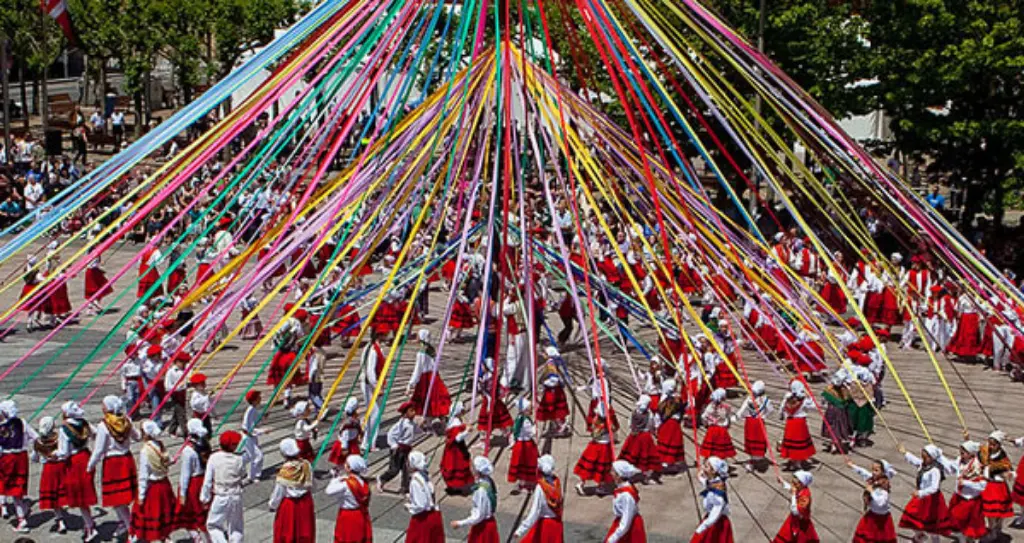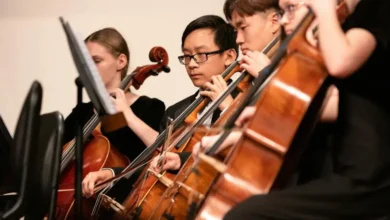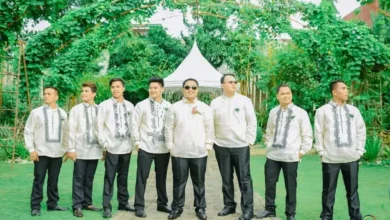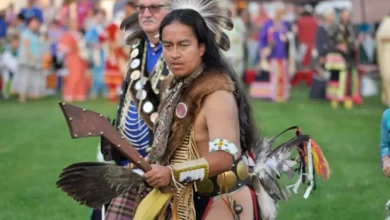Traditional dance is much more than just rhythmic movement; it’s a powerful form of cultural expression that plays a vital role in ceremonies across the globe. From joyous celebrations to solemn rituals, dance encapsulates history, beliefs, and community spirit. This article will explore the significance of traditional dance in various cultural ceremonies, highlighting its diverse forms and profound impact.
Dance as a Language: Communicating Beyond Words
Dance, in its essence, is a universal language. It transcends spoken words, conveying complex emotions and narratives through gestures, postures, and rhythms. In cultural ceremonies, these non-verbal communications become particularly potent.
Dances often recount historical events, explain cosmological beliefs, or honor significant figures. This makes dance not just a performance, but an active form of storytelling and a tool for passing down traditions.
Expressing Identity Through Movement
Each culture has developed unique dance forms that reflect its specific history, environment, and social structure. The movements, costumes, and music used in these dances are deeply intertwined with cultural identity.
See also The Sacred Fire: A Symbol in Global Marriage Ceremonies
The Sacred Fire: A Symbol in Global Marriage Ceremonies

For example, the Haka of the Māori people of New Zealand is a powerful display of strength and unity, often performed before important events. It’s more than just a dance; it’s a visceral expression of Māori identity and heritage.
Similarly, the intricate footwork and flowing movements of Indian classical dances like Bharatanatyam are deeply rooted in religious and philosophical traditions. Therefore, traditional dances are not merely aesthetic presentations but embodiments of cultural values.
The Function of Dance in Rituals and Celebrations
Traditional dances feature prominently in both solemn rituals and exuberant celebrations. They serve various purposes, from seeking divine favor to marking life transitions. The role of dance can be divided into distinct functions, each adding its significance to the cultural ceremonies.
Dance in Religious and Spiritual Rites
Many traditional dances are intertwined with religious practices. They are often used to invoke deities, seek blessings, or commemorate religious events. For example, in many African cultures, dances are performed to honor ancestors or to connect with the spiritual realm. These dances often involve intricate movements, specific drumming patterns, and symbolic costumes, all designed to create a sacred and powerful atmosphere.
See also The Somali Dirac Dress: A Celebration of Culture and Heritage
The Somali Dirac Dress: A Celebration of Culture and HeritageThe Whirling Dervishes of the Sufi tradition is another profound example, where the act of whirling itself is a form of prayer, meant to induce a state of spiritual ecstasy. These dances are not merely performances, but are believed to be a direct link to the divine.

Dance in Life Cycle Ceremonies
Dance plays a significant role in marking important stages of the human life cycle, from birth to death. In many cultures, dances are performed at birth celebrations to welcome new life into the community. Similarly, coming-of-age ceremonies often involve dances that symbolize the transition from childhood to adulthood.
These dances can be physically demanding, testing the initiates’ strength and stamina. Marriages are another important occasion for dance, with performances often reflecting the union of two families and the beginning of a new chapter.
Funeral rites also incorporate dances, often expressing mourning, but also celebrating the life of the deceased and helping to facilitate the transition to the afterlife. These dances offer a structured way to process emotions and navigate significant life changes.
Dance in Seasonal Festivals and Harvest Celebrations
Many cultures observe seasonal festivals and harvest celebrations with traditional dances. These dances are often connected to the agricultural cycle, expressing gratitude for a bountiful harvest or invoking prosperity for the coming season. The dances are often lively, involving elaborate costumes, masks, and music.
For example, the Maypole dance in European traditions celebrates the arrival of spring, while the various harvest dances in agricultural societies are a way of thanking the gods for the bounty of the land. These dances not only provide entertainment but also act as reminders of the interconnectedness of the community with nature and the importance of the agricultural cycle.

The Diversity of Dance Forms Across Cultures
The world showcases a remarkable diversity of traditional dance forms, each unique in its movements, costumes, and music. Understanding the nuances of these forms provides insights into the rich tapestry of human cultures.
African Dance: Rhythmic Energy and Expression
African traditional dances are known for their dynamic movements, intricate rhythms, and deep connection to the community. These dances often involve complex footwork, body isolations, and percussive sounds, with a strong emphasis on rhythm and energy.
They are not just visual performances, but participatory events that involve the entire community. Dances often play crucial roles in religious rituals, social events, and storytelling. From the exuberant celebratory dances of West Africa to the trance-inducing dances of Southern Africa, the diversity of African dance reflects the vastness and richness of its cultures. Masks and body paint are also integral parts of many African dances, adding layers of symbolism and meaning.
Asian Dance: Grace, Precision, and Spirituality
Asian traditional dances are equally diverse, characterized by their grace, precision, and often, spiritual undertones. The classical dances of India, such as Bharatanatyam and Kathak, are known for their intricate hand gestures (mudras), footwork, and facial expressions, all aimed at conveying narratives and emotions.
Japanese dances, like Noh and Kabuki, combine stylized movements, elaborate costumes, and dramatic storytelling. Similarly, traditional Chinese dances, such as the Lion Dance and the Dragon Dance, are vibrant expressions of cultural identity and celebration, often performed during festivals. Each of these dance forms has its own distinct history, technique, and purpose, reflecting the rich cultural heritage of the Asian continent.

European Dance: From Folk Traditions to Courtly Elegance
European traditional dances range from lively folk dances to elegant court dances, each reflecting the social customs and historical contexts of their origins. Folk dances, like the Irish Step Dance, are often energetic and participatory, with intricate footwork and fast-paced rhythms.
Court dances, on the other hand, like the Minuet and the Waltz, are characterized by their grace, formality, and refined movements. Many European folk dances are tied to seasonal festivals and celebrations, embodying a sense of community and heritage. These diverse forms highlight the rich cultural history of Europe.

Indigenous Dances of the Americas: Connection to Nature and Ancestors
The traditional dances of indigenous peoples in the Americas are often deeply connected to nature, spirituality, and ancestral traditions. From the Powwow dances of Native American tribes, which involve intricate footwork, drumming, and regalia, to the energetic dances of various Latin American cultures, these dances often express a close relationship with the natural world and seek to honor their ancestors.

These dances are more than just entertainment; they are a way of preserving cultural identity, practicing traditions, and connecting with the spiritual world. Each indigenous group has its own unique dance styles and purposes, highlighting the diversity of cultures across the Americas. For example, the Tango, while having European influence, has also incorporated aspects of the traditions from African slaves in Argentina and Uruguay.
The Importance of Preservation and Promotion
In the face of globalization and modernization, many traditional dance forms are at risk of disappearing. It’s crucial to recognize the importance of preserving and promoting these dances as invaluable aspects of cultural heritage. Several initiatives are currently in place to safeguard these cultural treasures for future generations.
Challenges to Preservation
Several factors contribute to the decline of traditional dance forms. Modern lifestyles often leave little time for traditional practices, while younger generations may be drawn to more contemporary forms of entertainment. The influence of globalized culture, including pop music and dance, poses a challenge to local traditions.
Furthermore, social and political changes can also undermine the continuity of traditional practices. Lack of formal education and training in traditional dance forms, alongside a dwindling number of knowledgeable practitioners, puts the future of these dances at risk. Financial constraints also hinder the maintenance of costumes, musical instruments, and venues needed for performances.
Strategies for Preservation and Promotion
To address these challenges, various strategies are being implemented: Formal dance education in schools and cultural institutions is crucial for ensuring that traditional dance forms are passed down to younger generations.
Community-based programs and workshops can help to engage local communities in dance activities and to raise awareness of their cultural heritage. Recording and archiving traditional dance performances and knowledge is also essential for posterity. Supporting traditional dance practitioners through grants, training programs, and cultural exchanges is important.
Furthermore, incorporating elements of traditional dance into contemporary performances can help to revitalize these forms and to reach a broader audience. Collaborations between cultural organizations, artists, and researchers can also play a significant role in preserving and promoting traditional dance forms.
Traditional dance is a vibrant and indispensable part of cultural ceremonies worldwide. It acts as a powerful language, communicating stories, beliefs, and values through movement. It plays a vital role in rituals, celebrations, and life cycle events, expressing joy, grief, and spiritual connection.
The immense diversity of traditional dance forms across different cultures highlights the richness of human expression. Preserving these dances is not just about maintaining cultural traditions; it is about safeguarding invaluable aspects of humanity’s heritage.
By understanding and valuing the role of traditional dance, we gain a deeper appreciation for the tapestry of human experience. Through collaborative efforts and continued dedication, these beautiful and significant forms can continue to enrich our lives for generations to come.




